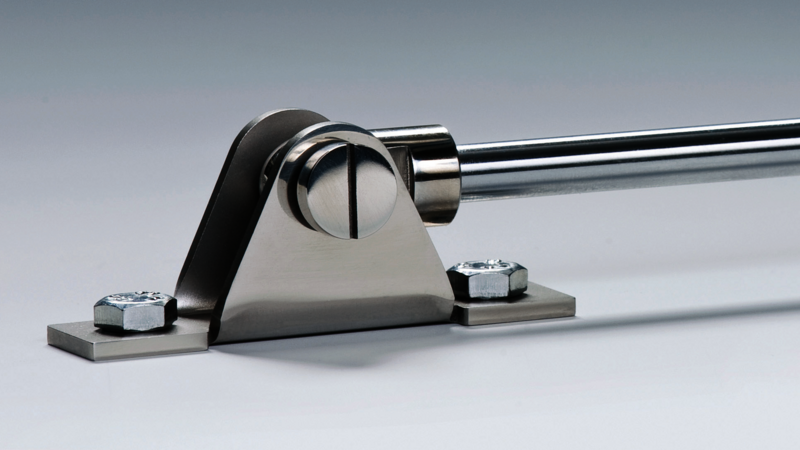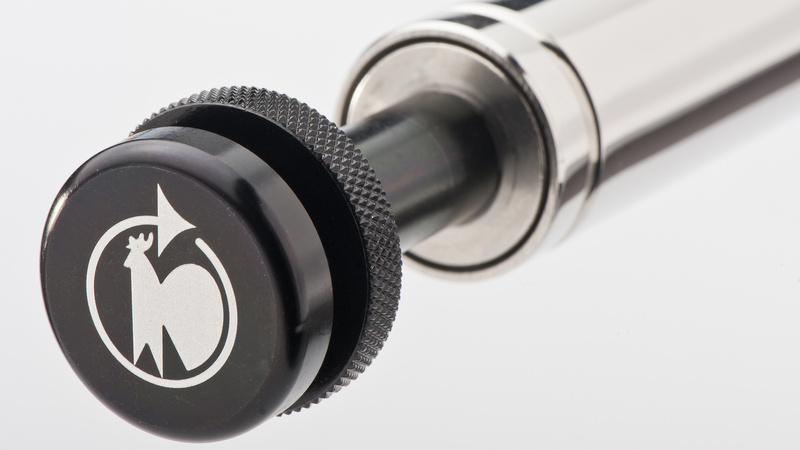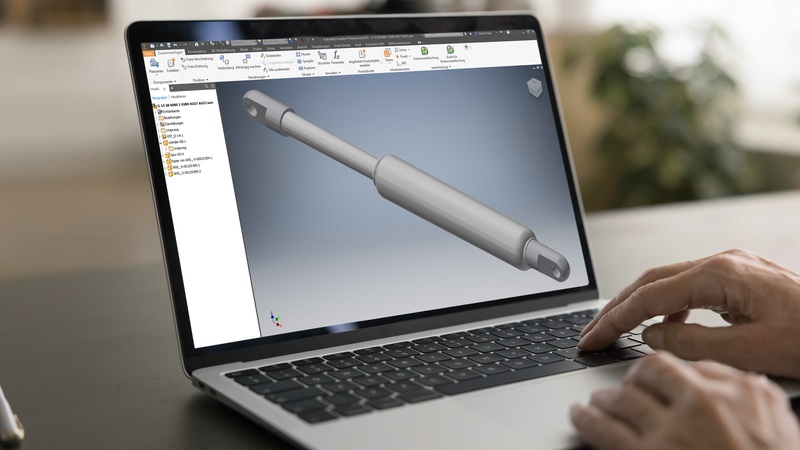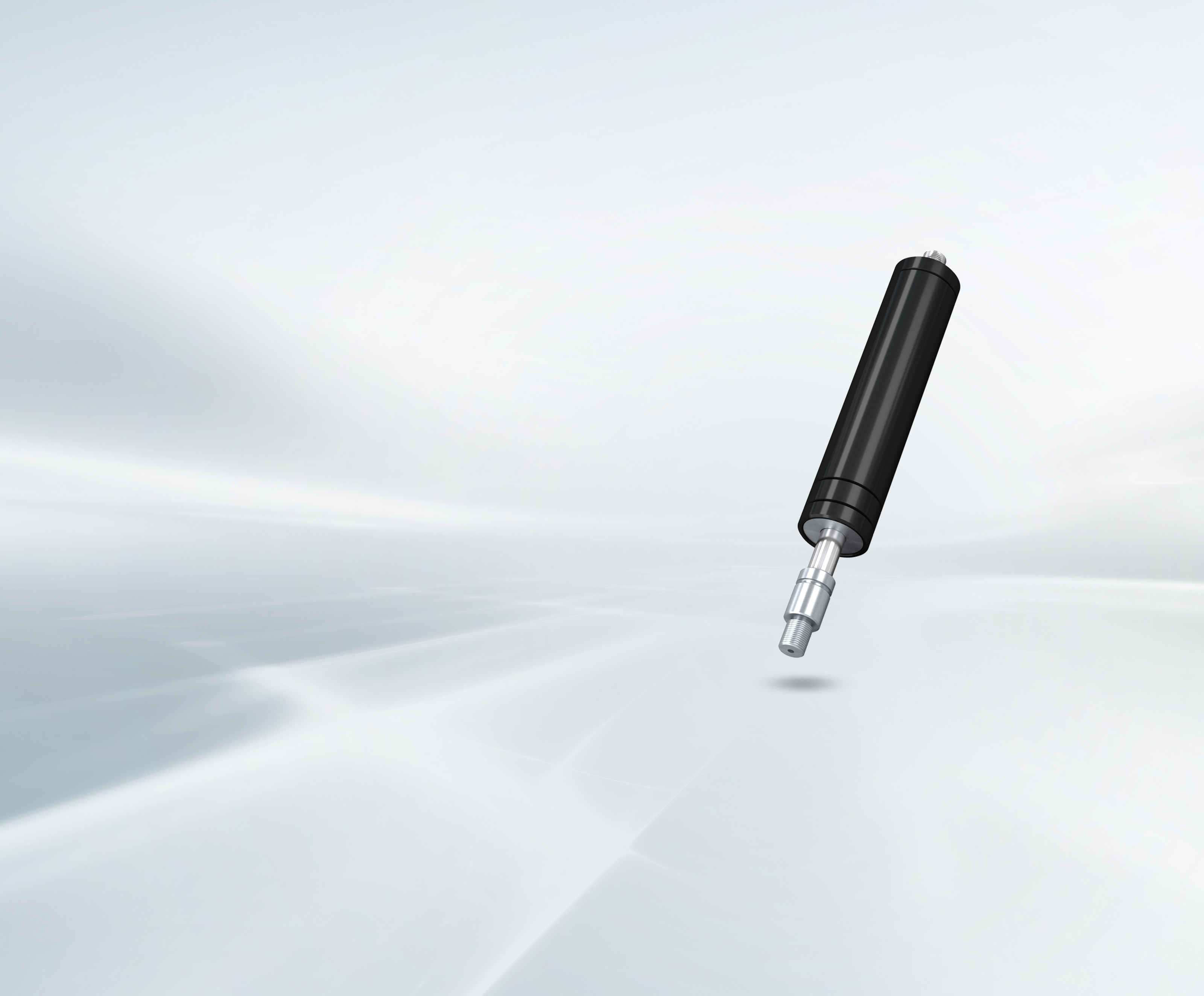Our tension springs are used whenever conventional gas pressure springs reach their limits and flexible, space-saving solutions are required. Thanks to our modular system, we can offer you many customizations and extras as standard. A special advantage of our tension springs lies in the materials used: V2A (AISI 304) and V4A (AISI 316) stainless steel are not only durable and corrosion-resistant, but also open up flexible application opportunities that many other suppliers cannot cover.

Tension gas springs offer space-saving solutions
Gas tension springs can be used wherever a normal tension gas spring cannot due to space constraints. Tension springs provide optimal support, particularly in confined spaces or special application areas – such as, for example, in elevator exit hatches or desks with hinged work surfaces. They allow for the power-assisted opening of hatches that have to be pulled upwards.
Functional principle
The tension gas spring is a low-maintenance system consisting of a pressure tube, a piston rod, and a piston. It is filled with compressed nitrogen, which creates the spring force. There is a seal on the piston rod guide that minimizes gas loss. Tension gas springs also have an atmospheric bore that allows a connection between the environment and the interior of the tension spring to compensate for pressure differences. They work in accordance with the reverse functional principle of gas pressure springs: The gas pressure in the cylinder pulls the piston rod inward. When closing a hatch, the tension spring supports the hand force.
When unloaded, the piston rod of a tension gas spring is always retracted. When the piston rod is pulled out, the volume in the cylinder decreases and the gas is compressed. This increases the force (progression), the extent of which depends on the diameter of the piston rod and the volume of the cylinder. The standard tension gas springs from HAHN are undamped and do not have a nozzle bore. An exception is the ZD special tension spring, which is equipped with a small opening (nozzle) in the piston. This nozzle bore allows the gas to flow through and ensures a defined extension speed of the piston rod. The cross-section (diameter) of this opening determines the degree of damping for this particular spring.
Series and sizes
You can find all our different series and sizes in our catalog.
Options and materials that are suitable for every challenge
We offer tension gas springs in various designs for precise motion control. Each variant and each material offer specific customization options to optimally meet your requirements:
Tension gas springs
Tension gas springs with damping
Lockable tension gas springs:
Our tension gas springs are available in various materials, each offering specific advantages and applications:
Steel
V2A (AISI 304) stainless steel
V4A (AISI 316) stainless steel
-
Accessories

Discover our versatile accessories for gas springs and special solutions: From flexible actuation systems to special components for extreme conditions. Perfect solutions to suit your individual requirements – with HAHN Gasfedern, there are no limits to your creativity!
-
Extras

Discover our customized extras for HAHN gas springs. From protective tubes and seals to special damping solutions, we offer innovative solutions to meet all requirements for optimizing the performance and longevity of your gas springs.
-
Calculation tools

Whether you are interested in gas springs, oil brakes, or sliding door dampers, our experienced specialists will calculate the ideal solution for you that is customized to your requirements. Simply fill out the appropriate form, and we will take care of the rest so that you receive a product tailored to your application.
